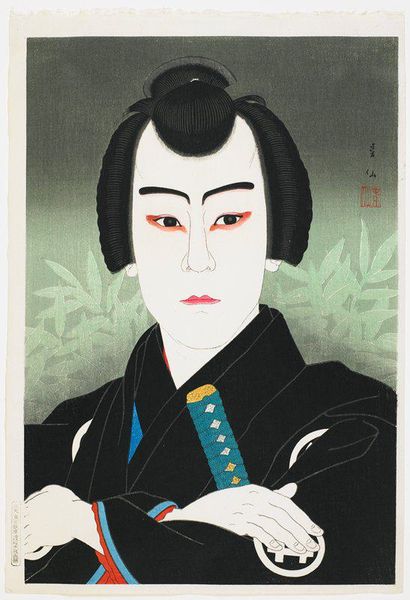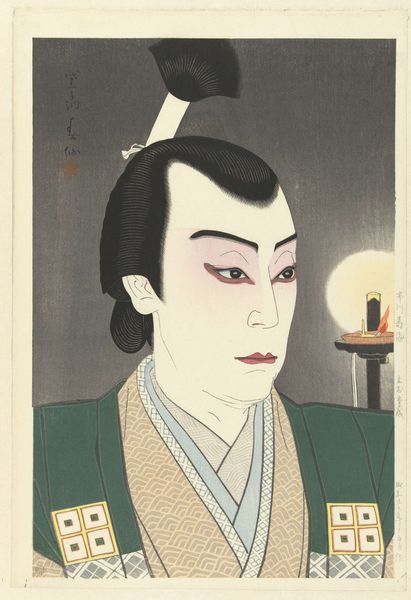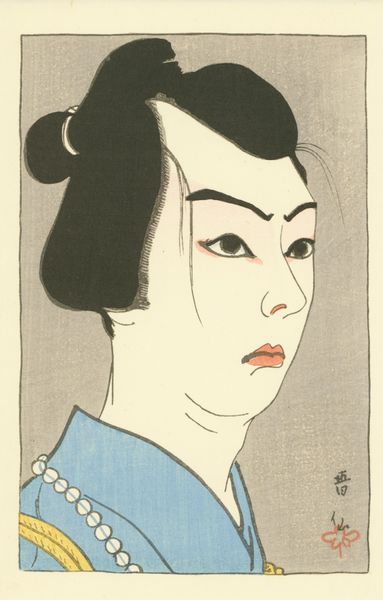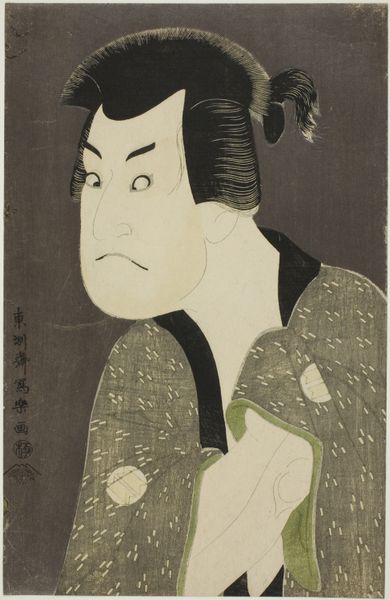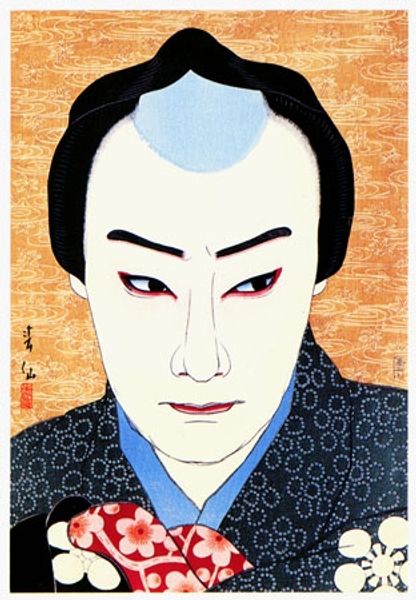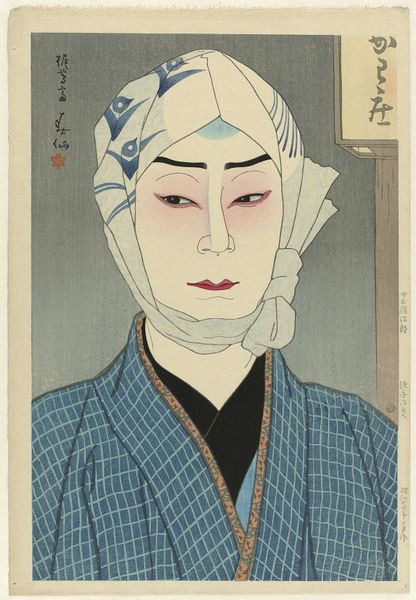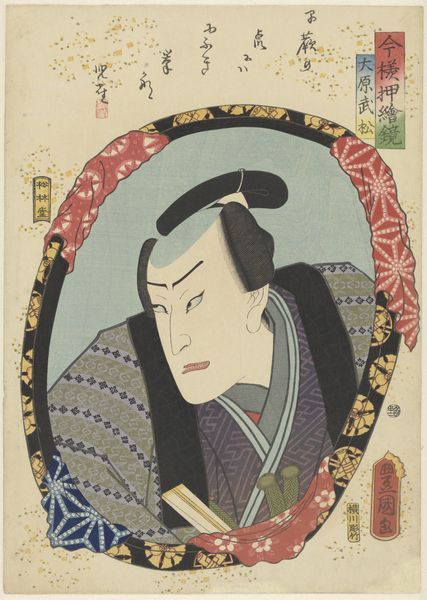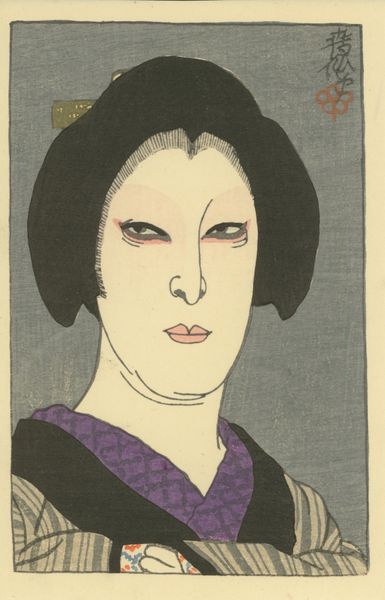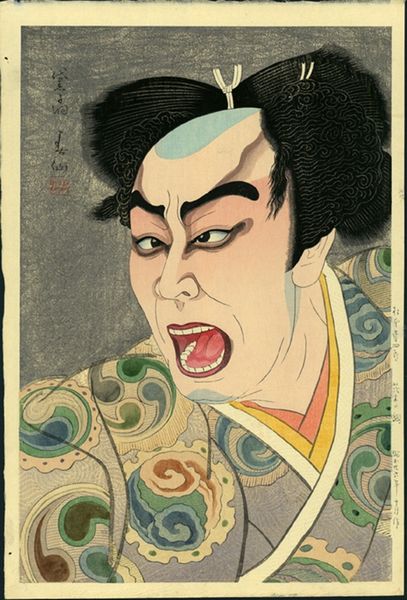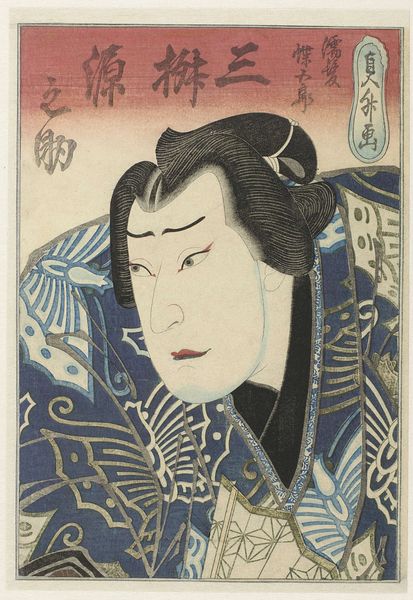
Copyright: Public domain Japan
Curator: Here we have Natori Shunsen's "Sawamura Sojoro as Narihira Reizo," a striking woodcut print from 1927. The composition is immediately captivating, isn't it? Editor: Absolutely. I'm drawn to the materiality – the visible woodgrain adding texture. It speaks volumes about the printmaking process itself, labor-intensive and meticulous. And there’s the caricature-like theatricality of the actor. Curator: The actor's exaggerated features, especially around the eyes and mouth, certainly lend themselves to that interpretation. However, these stylistic exaggerations are critical in Japanese Ukiyo-e portraiture and served specific purposes, particularly in depicting Kabuki actors like Sawamura Sojoro. How do you see those choices playing into the overall meaning? Editor: It’s fascinating to think about the original blocks carved by artisans, carefully chosen wood allowing for these nuanced lines. Also the way the materials interact: the paper absorbs the inks, creating the different tonalities, adding depth and richness… Curator: A keen observation about the interplay of materials. Indeed, it amplifies the visual impact, but from a formalist standpoint, look how Shunsen utilizes line. Crisp outlines define every shape and shade to give the impression of reality; it's less about pure imitation but evokes presence. Editor: For me, these prints weren't about reality. It's important to note how such work was a consumer item for an urban audience wanting access to performance or, more tellingly, to the cult of personality that such actors embodied. Think of how prints are created, purchased, displayed – all within a socio-economic framework. Curator: And yet, through formal composition, Shunsen still establishes a clear hierarchy between background and foreground, focusing our gaze on the central figure, almost to the point where it becomes confrontational and isolates itself. A rather clever construction overall. Editor: Considering these details now, you make it difficult to unsee the print and its relationship to craftsmanship. That connection of production process, plus the theatrical personality, allows a clearer understanding of the overall impact of such striking presentation. Curator: Indeed. Seeing the work through different lenses adds another enriching dimension to its beauty and context. Editor: I agree. There's so much more to this image once we consider process with such dedication to formal qualities, it allows you see new qualities after all.
Comments
No comments
Be the first to comment and join the conversation on the ultimate creative platform.
